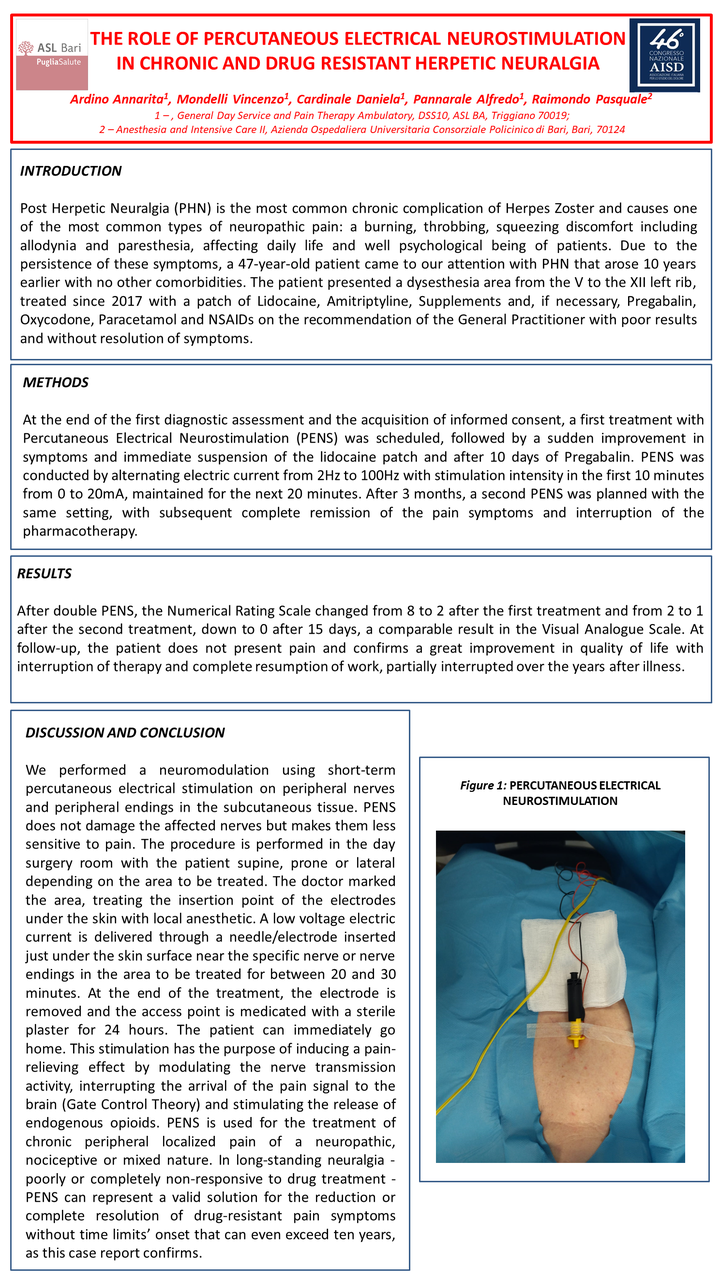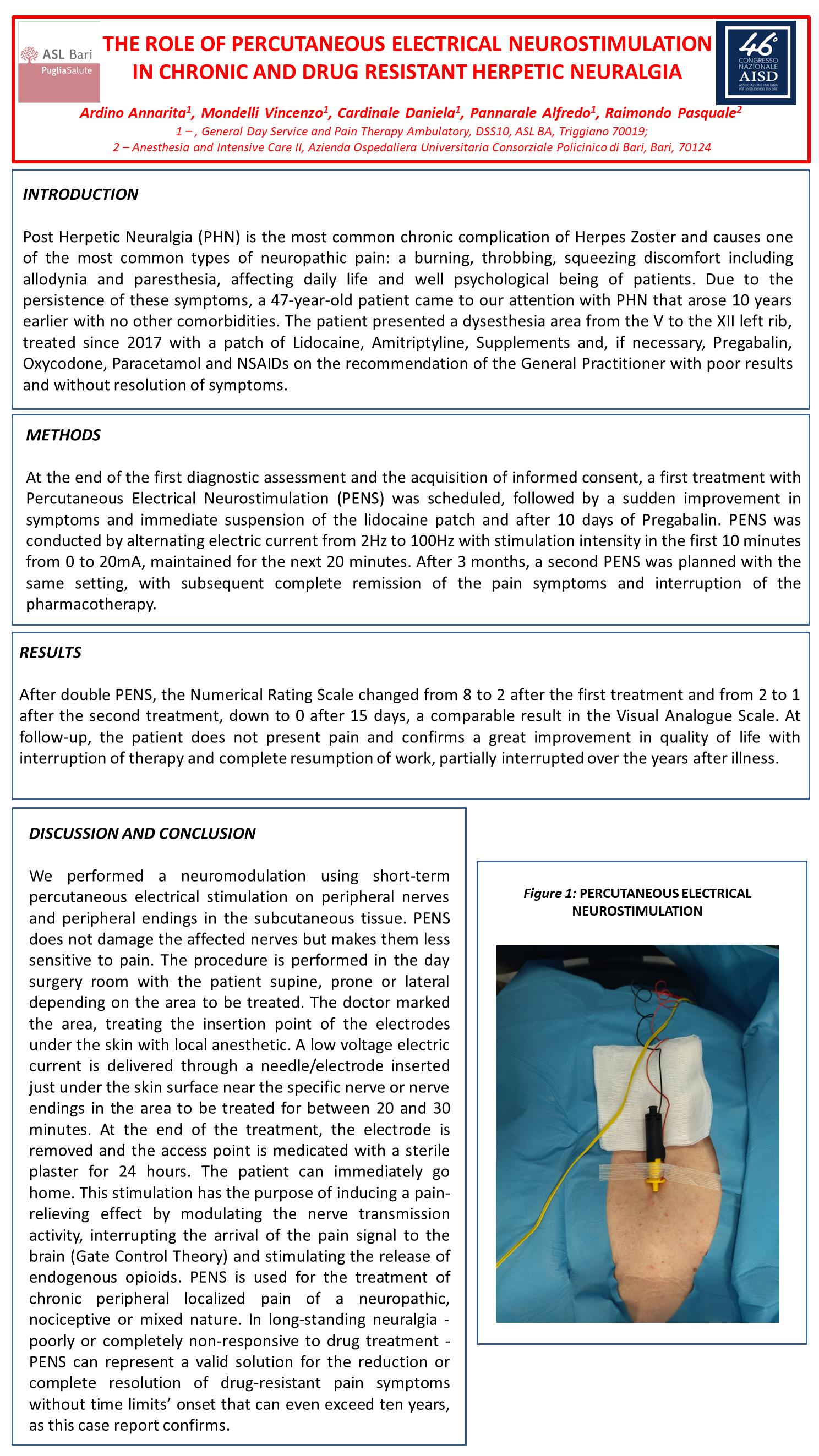Abstract
.INTRODUCTION
Post Herpetic Neuralgia (PHN) is the most common chronic complication of Herpes Zoster and causes one of the most common types of neuropathic pain: a burning, throbbing, squeezing discomfort including allodynia and paresthesia, affecting daily life and well psychological being of patients. Due to the persistence of these symptoms, a 47-year-old patient came to our attention with PHN that arose 10 years earlier with no other comorbidities. The patient presented a dysesthesia area from the V to the XII left rib, treated since 2017 with a patch of Lidocaine, Amitriptyline, Supplements and, if necessary, Pregabalin, Oxycodone, Paracetamol and NSAIDs on the recommendation of the General Practitioner with poor results and without resolution of symptoms.
METHODS
At the end of the first diagnostic assessment and the acquisition of informed consent, a first treatment with Percutaneous Electrical Neurostimulation (PENS) was scheduled, followed by a sudden improvement in symptoms and immediate suspension of the lidocaine patch and after 10 days of Pregabalin. PENS was conducted by alternating electric current from 2Hz to 100Hz with stimulation intensity in the first 10 minutes from 0 to 20mA, maintained for the next 20 minutes. After 3 months, a second PENS was planned with the same setting, with subsequent complete remission of the pain symptoms and interruption of the pharmacotherapy.
RESULTS
After double PENS, the Numerical Rating Scale changed from 8 to 2 after the first treatment and from 2 to 1 after the second treatment, down to 0 after 15 days, a comparable result in the Visual Analogue Scale. At follow-up, the patient does not present pain and confirms a great improvement in quality of life with interruption of therapy and complete resumption of work, partially interrupted over the years after illness.
CONCLUSIONS
We performed a neuromodulation using short-term percutaneous electrical stimulation on peripheral nerves and peripheral endings in the subcutaneous tissue. PENS does not damage the affected nerves but makes them less sensitive to pain. The procedure is performed in the day surgery room with the patient supine, prone or lateral depending on the area to be treated. The doctor marked the area, treating the insertion point of the electrodes under the skin with local anesthetic. A low voltage electric current is delivered through a needle/electrode inserted just under the skin surface near the specific nerve or nerve endings in the area to be treated for between 20 and 30 minutes. At the end of the treatment, the electrode is removed and the access point is medicated with a sterile plaster for 24 hours. The patient can immediately go home. This stimulation has the purpose of inducing a pain-relieving effect by modulating the nerve transmission activity, interrupting the arrival of the pain signal to the brain (Gate Control Theory) and stimulating the release of endogenous opioids. PENS is used for the treatment of chronic peripheral localized pain of a neuropathic, nociceptive or mixed nature. In long-standing neuralgia - poorly or completely non-responsive to drug treatment - PENS can represent a valid solution for the reduction or complete resolution of drug-resistant pain symptoms without time limits’ onset that can even exceed ten years, as this case report confirms.






